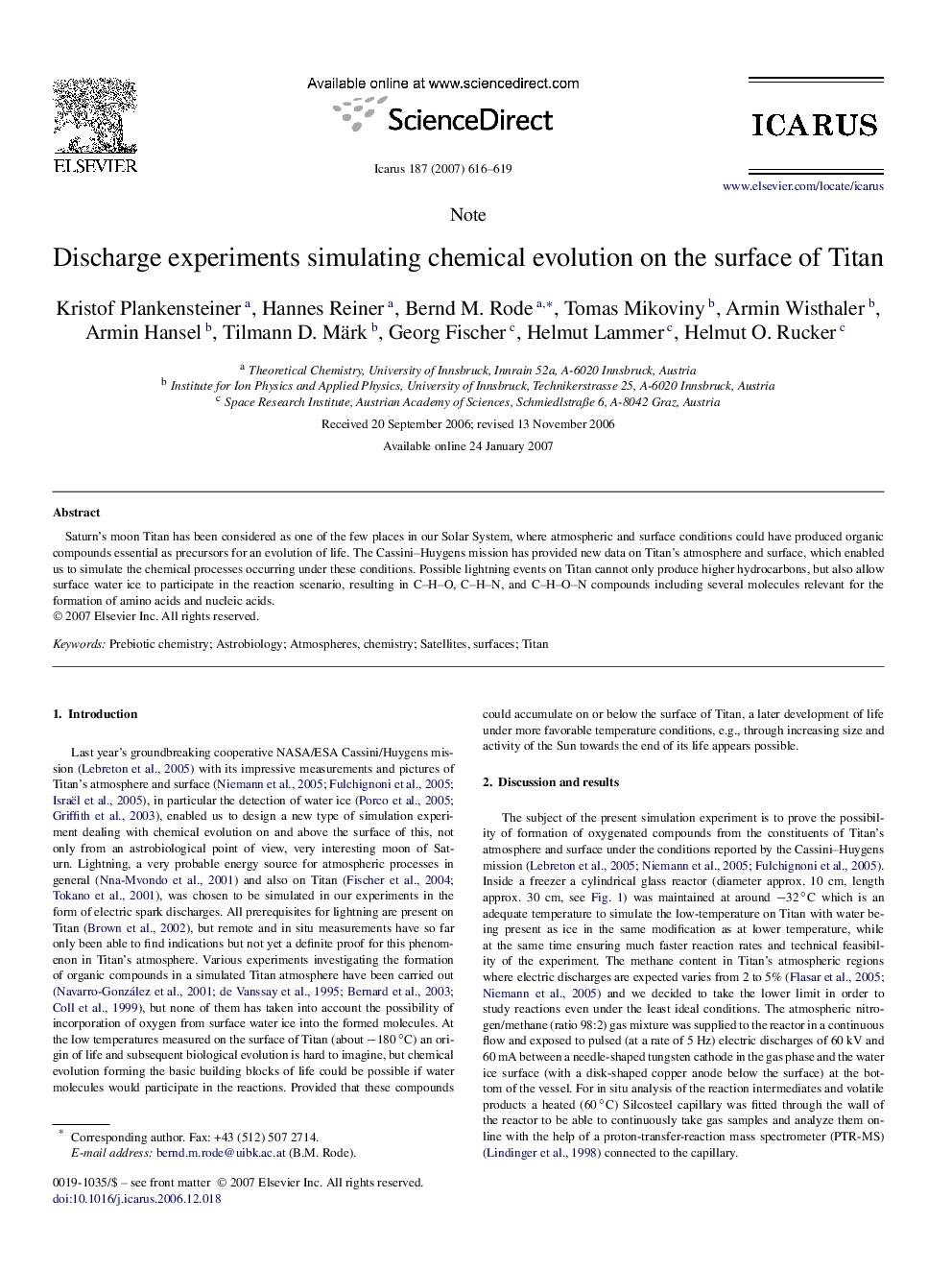| Article ID | Journal | Published Year | Pages | File Type |
|---|---|---|---|---|
| 1775435 | Icarus | 2007 | 4 Pages |
Abstract
Saturn's moon Titan has been considered as one of the few places in our Solar System, where atmospheric and surface conditions could have produced organic compounds essential as precursors for an evolution of life. The Cassini–Huygens mission has provided new data on Titan's atmosphere and surface, which enabled us to simulate the chemical processes occurring under these conditions. Possible lightning events on Titan cannot only produce higher hydrocarbons, but also allow surface water ice to participate in the reaction scenario, resulting in CHO, CHN, and CHON compounds including several molecules relevant for the formation of amino acids and nucleic acids.
Related Topics
Physical Sciences and Engineering
Earth and Planetary Sciences
Space and Planetary Science
Authors
Kristof Plankensteiner, Hannes Reiner, Bernd M. Rode, Tomas Mikoviny, Armin Wisthaler, Armin Hansel, Tilmann D. Märk, Georg Fischer, Helmut Lammer, Helmut O. Rucker,
